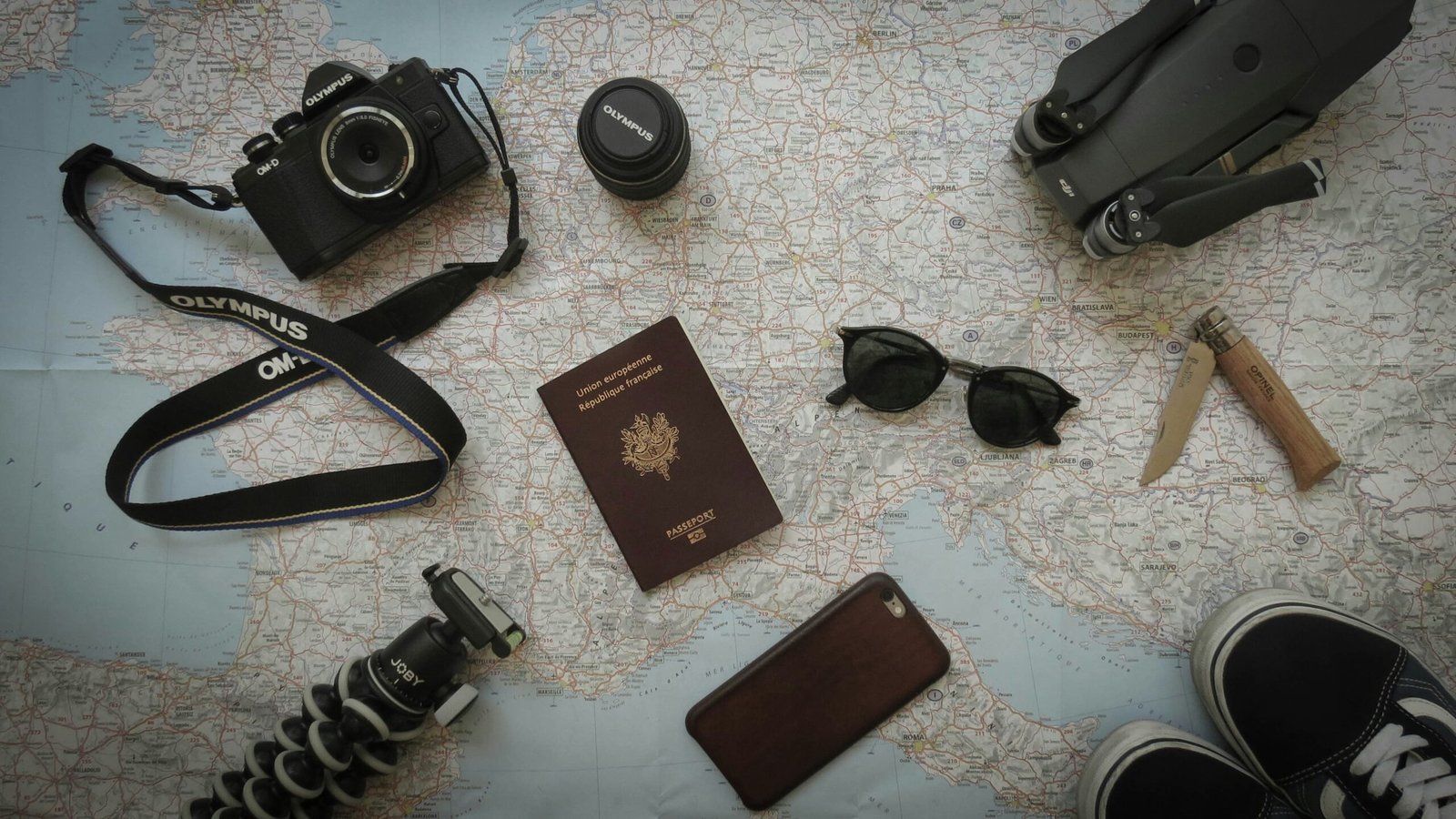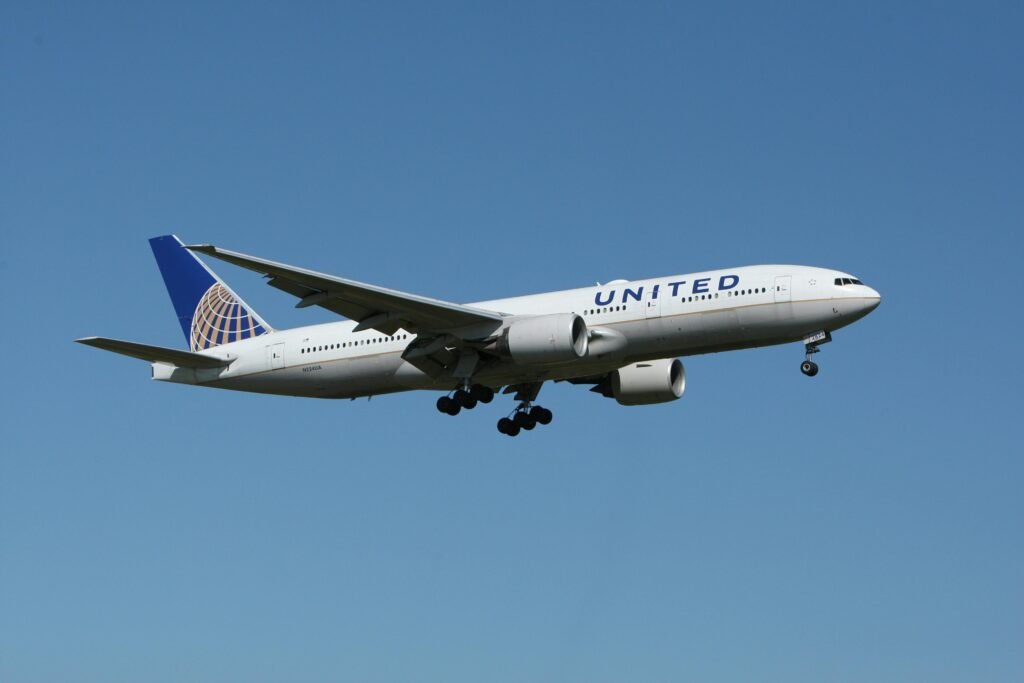Setting Your Budget
Establishing a realistic budget is a crucial aspect of planning your perfect trip, as it ensures that all financial aspects are considered, allowing for a more enjoyable experience without the stress of overspending. Begin by estimating your overall expenses, breaking them down into essential categories: transportation, accommodations, food, activities, and a contingency fund for emergencies.
Transportation costs typically encompass airfare, train or bus fares, and local transit options. Researching various websites can help identify budget-friendly flights or travel packages. Utilizing fare comparison tools can grant you insights into the best deals, enabling you to maximize your savings in this area.

When allocating funds for accommodations, consider a range of options such as hotels, hostels, or vacation rentals. Websites dedicated to travel bookings often provide promotional discounts or special rates, which can significantly impact your overall costs. Additionally, prioritize your accommodations based on comfort and convenience, ensuring proximity to key attractions.
Food is another essential component of your budget. Allocate a sensible daily allowance depending on your destination. Eating at local markets or utilizing kitchen facilities in accommodations can help minimize costs. For activities, research the attractions you wish to visit and their associated fees. Some destinations offer discounts for pre-purchased tickets or inclusive packages that can save you money in the long run.
As you plan your budget, it is essential to keep track of your spending. Consider using budgeting apps that allow you to categorize and monitor expenses, making it easier to adjust as needed. Additionally, travelers should remain vigilant of common budgeting mistakes, such as underestimating costs or failing to account for tipping and taxes, which can lead to financial difficulties during your trip.
Choosing the Right Destination
Selecting the perfect travel destination is a crucial step in planning your trip. It requires careful consideration of various factors, including personal interests, budget, climate, and available activities. Begin by identifying what you want from your travel experience. Are you seeking adventure, relaxation, cultural immersion, or perhaps a combination of these elements? This self-assessment will guide you in narrowing down potential locations that align with your preferences.
One of the first factors to consider is the climate of your chosen destination. Researching typical weather conditions during your intended travel period can significantly influence your experience. For instance, tropical regions may be appealing for a beach getaway, but understanding the monsoon season can prevent undesirable surprises. Additionally, be mindful of seasonal activities; some destinations are renowned for winter sports, while others may shine during the summer with festivals and outdoor excursions.
Your budget plays a pivotal role in destination selection. Different locations come with varying costs associated with accommodation, food, attractions, and transportation. Utilize travel websites that offer comprehensive price comparisons, and consider off-peak travel times for potential savings. While researching, also pay attention to any travel restrictions or safety advisories that may be in place, particularly in light of global health concerns or political climates.
A wealth of resources is available to aid in your destination research. Websites such as TripAdvisor, Expedia, and Lonely Planet provide valuable insights and user-generated reviews that can help gauge safety and highlight must-see attractions. Engage with travel forums or social media groups where experienced travelers share their experiences and advice. By considering these various factors and utilizing available tools, you’ll be well-equipped to select a travel destination that meets your expectations and ensures a memorable experience.
Booking Your Flights
When it comes to planning your perfect trip, booking your flights is one of the essential steps that requires careful consideration. To begin, comparing prices across multiple airlines is crucial. Numerous online travel agencies and flight comparison websites allow you to examine various options and find the best deals available. Utilizing these platforms can provide insight into fluctuations in ticket prices over time, enabling you to make an informed decision.
Understanding the best times to buy flights is equally important. Research indicates that the optimal time to book a flight is typically between six to eight weeks before your departure date. Airlines often release promotional fares well in advance, and fluctuating prices can help you identify when to purchase your ticket. Monitoring price trends and being flexible with travel dates can further enhance your chances of securing a lower fare.
Looking for discounts or promotional codes is another method to minimize your flight expenses. Airlines frequently offer special deals or discounts through their websites or newsletters. Signing up for alerts from your favored airlines or travel comparison websites can ensure that you are informed about sales or last-minute deals.
Choosing the right airport can make a significant difference in your travel experience. Major cities often have multiple airports, and selecting one over another can impact price, convenience, and flight availability. Additionally, consider routes with connecting flights; while they can sometimes be cheaper, they necessitate an understanding of layover times and potential delays.

Finally, securing flight insurance can be a prudent choice for travelers. It offers coverage for potential cancellations, delays, or unforeseen circumstances that may arise. Investing in this form of protection adds peace of mind, allowing you to focus on planning the memorable aspects of your journey.
Finding the Perfect Accommodation
Choosing the right accommodation is a crucial step in planning an enjoyable trip. Various accommodation types are available, including hotels, hostels, vacation rentals, and unique stays, each catering to different preferences and budgets. When selecting a place to stay, it is important to assess your needs, including the desired atmosphere, privacy level, and the amenities offered.
Hotels are often a popular choice for travelers seeking convenience and consistent services. They typically offer amenities such as room service, housekeeping, and fitness centers. Conversely, hostels provide affordable lodging options, making them attractive for budget-conscious individuals or those seeking a social atmosphere. For travelers desiring more home-like experiences, vacation rentals, such as apartments or houses, offer the opportunity for cooking and additional space.
Another option is unique stays, which can include eccentric accommodations such as treehouses, yurts, or boutique hotels. These options can enhance your travel experience and provide memorable stays that reflect local culture and charm.
In addition to types of accommodation, several key factors should influence your booking decision. Location is paramount; it can dictate how accessible local attractions, dining, and transportation are. Additionally, researching amenities is essential. Consider whether you prefer complimentary breakfast, Wi-Fi, parking, or a swimming pool, as these can impact your overall experience.
Price comparison is another vital factor when determining the best accommodation. Utilize various travel websites and apps to find competitive rates, and remember that booking directly through an establishment’s website can sometimes offer special promotions or better cancellation policies.
Lastly, reading reviews from previous guests will provide insight into the quality of service and potential concerns. Pay attention to patterns in feedback regarding cleanliness, customer service, and noise levels. Understanding cancellation policies can also save you from unexpected costs if your travel plans change. By evaluating these aspects carefully, you can secure accommodations that align with your travel desires and enhance your overall trip experience.
Creating Your Itinerary
When it comes to planning your perfect trip, developing a well-structured itinerary is essential. A travel itinerary serves as a blueprint, guiding you from one destination to the next, while ensuring that you find a balance between sightseeing, relaxation, and spontaneous adventures. The goal is to create a flexible yet organized plan that allows you to enjoy each location fully.
The first step is researching activities and attractions in your destination. Begin by listing the must-see landmarks and unique experiences that interest you. Use travel blogs, official tourism websites, and social media platforms to gather insights and recommendations. Once you have your list compiled, prioritize these activities by their importance to you, keeping in mind the time you wish to allocate for each.
When crafting your daily itineraries, it’s vital to group nearby attractions together. This approach minimizes travel time and enables greater exploration of a particular area. However, ensure to incorporate some downtime into your plans. Leaving free time for relaxation or unexpected adventures enhances your travel experience and allows for spontaneity – often leading to the most memorable moments.
Transportation is another crucial element of itinerary planning. Research the best methods of travel between your points of interest, whether by foot, public transport, or rental vehicles. This not only contributes to the logistical flow of your trip but also helps avoid any last-minute headaches. Various applications and websites can assist in organizing transportation options effectively.
Lastly, always remain open to adapting your itinerary as needed. Travel can be unpredictable, and flexibility is key to accommodating any last-minute changes while still delivering an enjoyable experience. By following these guidelines, you can create a travel itinerary that ensures you make the most of every moment, capturing the quintessential essence of your journey.
Preparing Travel Documents
When planning any trip, gathering and organizing the necessary travel documents is a crucial step that cannot be overlooked. At the forefront of these documents is the passport, which serves as your primary form of identification when traveling internationally. It is important to ensure your passport is valid for at least six months beyond your planned return date, as many countries enforce this policy. If you need to apply for or renew your passport, be mindful of processing times, which can vary significantly. It is advisable to start this process well in advance of your intended travel date.
Next, depending on your destination, you may also require a visa. A visa is an endorsement on your passport that allows you to enter, stay, or leave a country under specific conditions. Different countries have varying requirements regarding visas, so it is essential to research the entry requirements for each destination well before you travel. Many countries now offer online visa applications, which can simplify the process. Always check for additional forms such as an Electronic Travel Authorization (ETA) if applicable to your itinerary.

Furthermore, proper documentation includes understanding travel insurance policies. Travel insurance is paramount as it protects you against unforeseen events, such as trip cancellations, medical emergencies, or lost belongings. Review various travel insurance options and select a plan that suits your needs, keeping in mind factors like coverage limits and exclusions.
To safeguard your important documents, consider keeping both physical and digital copies. Utilize a secure cloud storage service, and save scanned versions of your passport, visa, and other essential documents. This practice can provide you with easy access in case of loss or theft while traveling. In conclusion, preparation is essential when it comes to travel documents. Ensure you have everything in order before embarking on your journey for a smoother travel experience.
Packing Efficiently
Packing efficiently is a crucial element in the preparation for any trip, one that can significantly influence your travel experience. To begin with, crafting a comprehensive packing list is essential. This list allows you to categorize items based on your itinerary, ensuring that no important essentials are left behind. Include clothing appropriate for your destination’s climate, personal hygiene items, and any travel documents required.
When selecting the right luggage, consider both size and durability. Opt for lightweight options that comply with airline regulations, and always check the dimensions and weight restrictions to avoid unforeseen fees. Suited to your travel style, rolling suitcases, backpacks, or duffel bags can be excellent choices. Each option has its advantages, such as ease of mobility or additional storage space.
Strategically packing according to your itinerary can further streamline your travel. For instance, if you have planned activities that necessitate specific attire, keep those items accessible. Use packing cubes or compression bags to maximize space and keep your belongings organized. Additionally, consider your trip’s length; for longer stays, versatile clothing that can be mixed and matched is invaluable.
Avoiding common packing mistakes is crucial to enhance your travel experience. Overpacking is one such error that many travelers succumb to, often resulting in a heavy, cumbersome luggage. Instead, aim to pack only what you truly need and allocate some space for potential purchases during your journey. Ensure that you prioritize essentials such as medications, chargers, and a small first aid kit, as these are items you would not want to be without on your trip.
Staying Connected While Traveling
In today’s digitally-driven world, staying connected while traveling is more important than ever. Whether for sharing experiences with loved ones or navigating new environments, reliable communication and internet access play a crucial role in ensuring a seamless trip. Travelers have multiple options to remain connected, including mobile solutions and internet access points, which are essential for both safety and convenience.
One popular choice for maintaining mobile connectivity abroad is purchasing a local SIM card. Many countries offer affordable prepaid SIM cards that can be easily activated to provide data and calling services at competitive rates. This option often proves more economical than international roaming plans offered by home carriers. Before traveling, it is advisable to check compatibility with your device and consider the coverage provided by different local carriers. In addition, utilizing an international plan through your existing carrier may also be beneficial, as it usually allows you to maintain your phone number and original features while traveling.
Wi-Fi access is another valuable resource for staying connected. Public places such as cafes, hotels, and libraries generally offer free Wi-Fi. However, travelers should exercise caution regarding their privacy and security when using public networks. To safeguard personal information, employing a VPN (Virtual Private Network) is advised. This ensures that sensitive data remains encrypted and protected during online activities. Moreover, familiarizing oneself with navigation apps is essential. These applications can offer real-time directions as well as information on local attractions, dining options, and public transport, streamlining the travel experience.
Additionally, keeping in touch with friends and family back home helps share memories and updates while on the move. Utilizing messaging apps and social media platforms makes it easy to share photos or inform loved ones of your travel progress. Prior planning around your connectivity will undoubtedly enhance your overall travel experience and provide peace of mind during your journey.
Common Mistakes to Avoid
When planning a trip, even the most seasoned travelers can fall prey to common mistakes that may compromise their travel experience. One frequent error is over-scheduling, which can lead to stress and fatigue. It is essential to strike a balance between exploring new destinations and allowing for downtime. A flexible itinerary enables travelers to enjoy spontaneous experiences that enrich their journeys. To avoid over-scheduling, allocate time for relaxation and be open to adjusting plans as opportunities arise.
Another common oversight is not researching local customs and traditions. Understanding the cultural nuances of a destination not only fosters respect but also enhances the travel experience. Ignorance of local etiquettes can lead to misunderstandings or unintentional offenses. Therefore, it is prudent to spend some time familiarizing oneself with cultural norms, including appropriate dress codes, dining etiquette, and social customs. Utilizing travel guides, cultural blogs, or engaging with locals can offer invaluable insights into the destination’s traditions.
In addition, travelers often forget to consider health precautions related to their destinations. This includes staying updated on vaccinations, understanding any potential health risks, and packing necessary medications. Ignoring these health-related aspects can lead to preventable illnesses and disrupt the travel experience. Researching health advisories and consulting with a healthcare professional prior to departure ensures that travelers are well-informed and prepared for any potential health issues.
Lastly, failing to account for unforeseen events can create unnecessary challenges during a trip. Weather disruptions, transportation delays, or sudden closures can impact travel plans significantly. Building flexibility into itineraries, having travel insurance, and maintaining a positive attitude can mitigate the effects of unexpected events. By being aware of these common mistakes and proactively addressing them, travelers can enhance their overall journey and create unforgettable memories.
